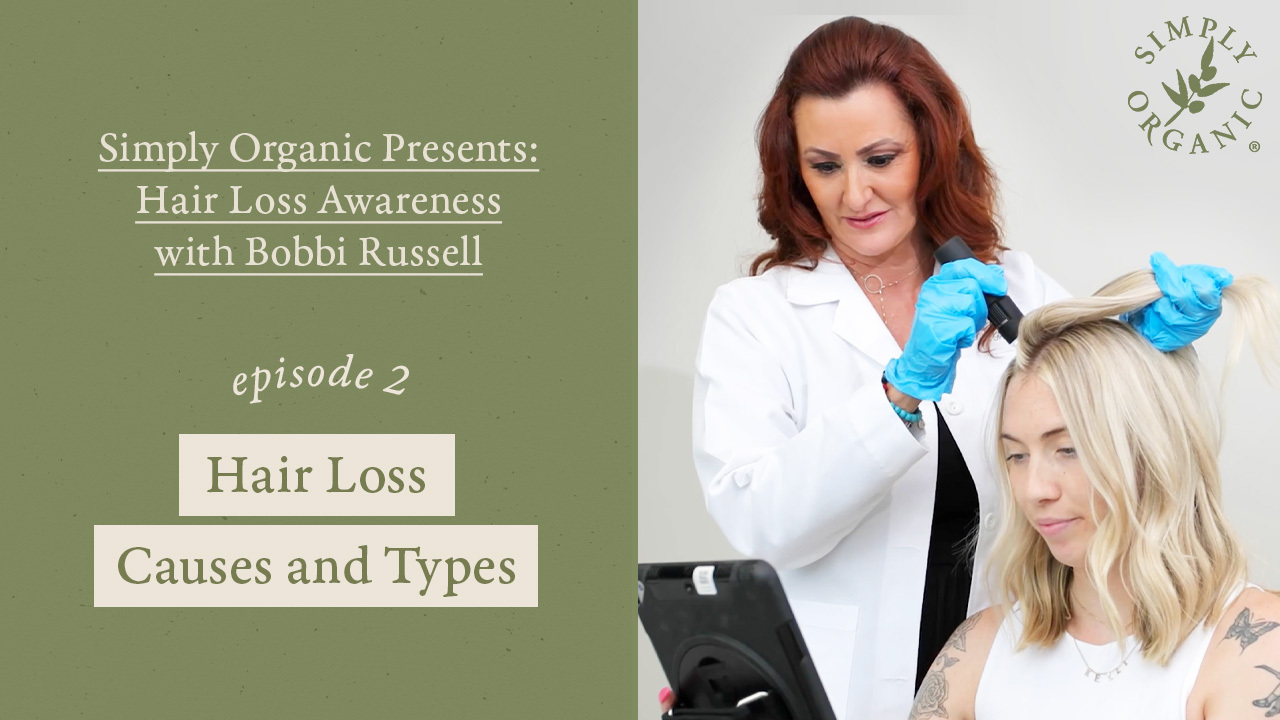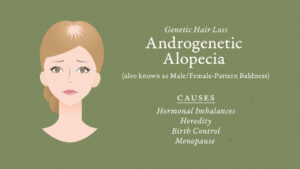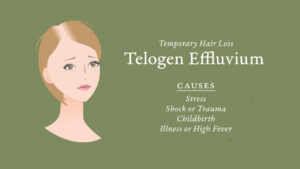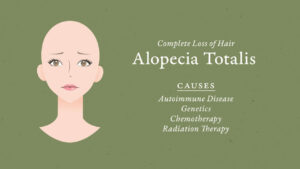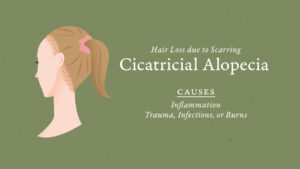During Hair Loss Awareness Month – Hair loss expert, Bobbi Russell is back! She is here to educate salons and clients alike on the hair growth cycle, types of hair loss and reasons you may be experiencing them.
HAIR GROWTH CYCLE
Anagen Phase
This is your “active growth” phase. This cycle will last 2-6 years and average 18-30 inches of hair growth during this time. This stage is different for everyone however, average hair growth is approximately half an inch per month.
Catagen Phase
This is your “transitional” phase. This is when your hair stops growing and typically lasts 10-21 days. It will detach and is cut off from the blood supply.
Telogen Phase
This is your “resting” phase – meaning the hair follicle remains dormant. This phase lasts 1-4 months but averages 45-90 days. During this phase, hair starts to grow back and pushes the previous hair out – we would refer to this as “shedding”.
There are two types of hair:
Terminal Hair – this hair is stronger, deeper, and thicker. Examples of terminal hairs include the hair on your head, facial hair, eyelashes, eyebrows, pubic hair, chest hair and belly hair.
Vellus Hair – this hair is smaller, shallower, and finer. This hair is translucent and unmistakably thinner than other hair on your body. You’ll also find these tiny hairs on your nose and eyelids. This is commonly known as “peach fuzz.”
Did you know that hair is one of the waste relievers of the body? It is something to consider when practicing a healthy lifestyle – what we choose to put in, comes out in our hair, skin and nails.
TYPES OF HAIR LOSS
As you may know, genetic hair loss is the most common type of hair loss for both men and women. Androgenetic Alopecia – commonly known as “male/female patterned hair loss” is at the top of the list. It is caused by the production of DHT (dihydrotestosterone) creating hair to thin and fall. The follicle will miniaturize, eventually atrophy and stop growing. This affects 1 in 5 adults.
For women, many will not have a family history of genetic hair loss – but this type of hair loss can be commonly caused by hormone changes due to birth control, childbirth, or menopause.
Telogen Effluvium occurs when there is a disruption of the growth phase causing the hair to move into the “resting phase” before its time. Very commonly it correlates with emotional or physical stress. This disruption will not cause the hair to fall immediately – you will typically see this 45-90 days after the incident has occurred. Hair will resume its natural hair growth cycle after this. Chronic Telogen Effluvium however, can cause severe hair loss over time.
Anagen Effluvium occurs when the release of the natural hair is premature in the “growing phase.” You will see this most likely occur in medical situations such as chemotherapy and radiation during cancer treatments. This begins approximately 12-17 days after the first treatment. Hair will typically begin to grow back as early as 30 days after the completion of the treatment.
Both are types of “situational shedding.”
Alopecia Areata, commonly known as “localized hair loss” is due to an autoimmune disorder.
The causes are unknown but it is typically temporary. It will appear as circle patches of lost hair, many types due to high levels of stress. Loss of all the hair on the scalp is known as Alopecia Totalis, while hair loss on the whole body is Alopecia Universalis – only 10% of people experiencing these forms of Alopecia will not grow their hair back.
There are many forms of Cicatricial Alopecia or “scarring Alopecia.” This type of hair loss is permanent and irreversible due to destruction of the hair follicle. Patches of this type of hair loss will appear jagged and less structured. It could be caused by hair extensions or traction of constant pulling in situations like tight braids or ponytails due to inflammation of the hair follicles. You could also experience this from a chemical burn from relaxers or other chemicals.
When you experience a slow progression of hair loss, typically from the front of the head to the back – you’re likely experiencing Frontal Fibrosing Alopecia. This is when the hair follicles are inflamed.
While many times we cannot prevent hair loss, with the help of experts (like Bobbi) we are able to gain a little more knowledge on why it may be happening and what can be done about it. If you have questions about hair loss, we recommend seeking further professional advice.
LEARN MORE during Episode Two with Bobbi!

